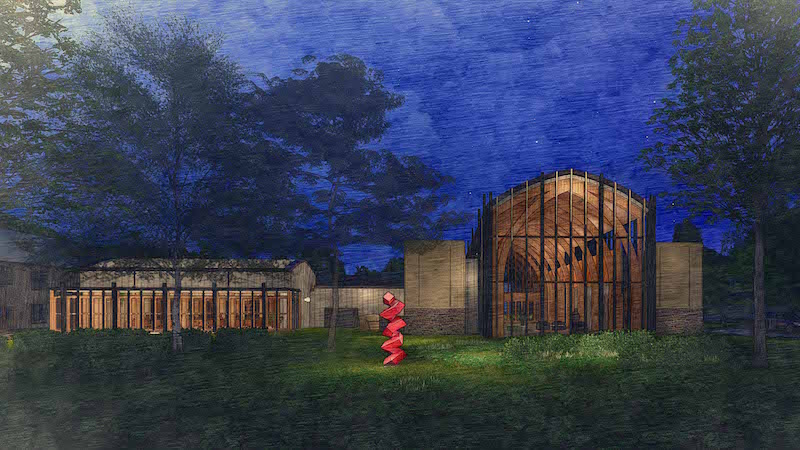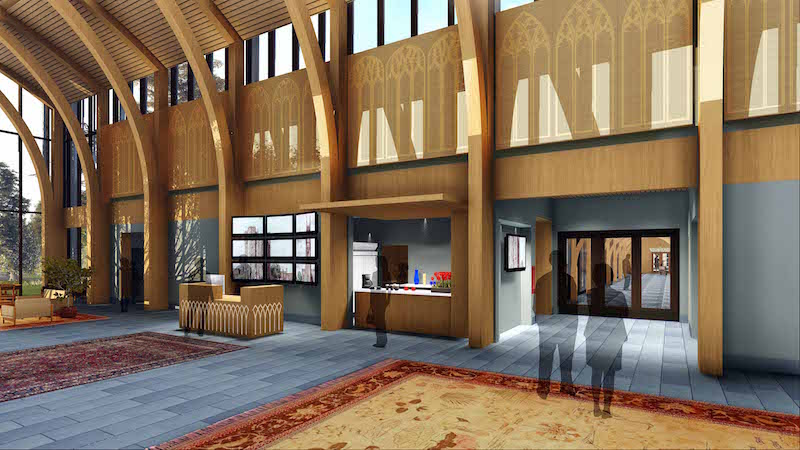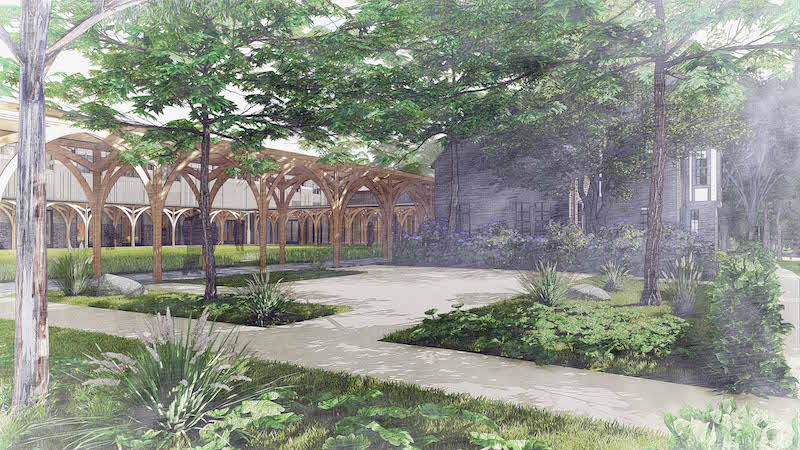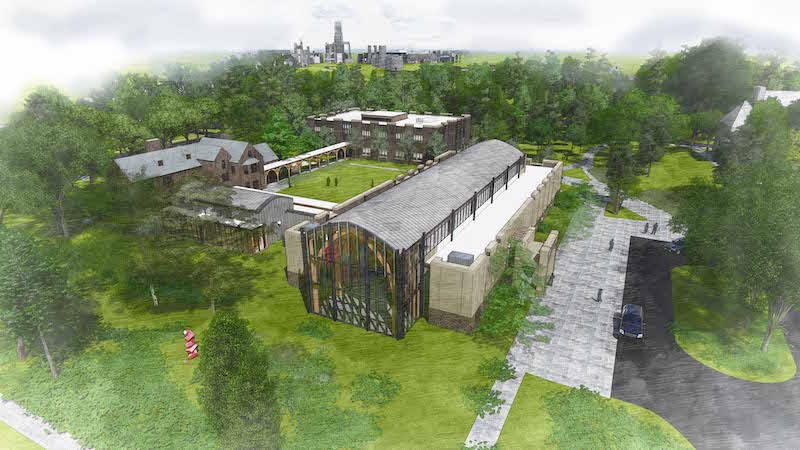The Karsh Alumni and Visitors Center will total almost 47,000 sf across three different buildings on Duke University’s campus. Centerbrook Architects & Planners designed the new complex, which includes event and office space for the Duke Alumni Association and a visitor center.
The largest aspect of the complex is a new 20,200-sf events building with a grand dining and presentation hall, exhibits and lounges, a café, visitor support services, and a smaller meeting pavilion wing. The building is designed to be the first campus stop for returning alumni, prospective students, and visitors. “The striking contemporary glass complements solid walls that hint at Gothic traditions with vertical fenestration, cast stone panels, and a base of locally quarried ‘Duke stone,’ a prominent campus characteristic,” says Mark Simon, FAIA, Centerbrook Principal and Project Architect.
 Rendering courtesy of Centerbrook Architects.
Rendering courtesy of Centerbrook Architects.
The second building is a new 16,900-sf, two-story alumni office meant for staff who support Duke’s alumni and development activities. The third aspect of the project is the renovation of the 7,400-sf Forlines House. This building was part of the original design of Duke’s West Campus that was originally constructed as a private residence for a university leader and used most recently as Duke’s Office of News and Communications. The renovation will remove modifications implemented through the years and restores the original rooms and details on the first floor. The renovations will also enhance the second floor for continued use as executive offices.
 Rendering courtesy of Centerbrook Architects.
Rendering courtesy of Centerbrook Architects.
 Rendering courtesy of Centerbrook Architects.
Rendering courtesy of Centerbrook Architects.
 Rendering courtesy of Centerbrook Architects.
Rendering courtesy of Centerbrook Architects.
Related Stories
| Oct 17, 2011
Clery Act report reveals community colleges lacking integrated mass notification systems
“Detailed Analysis of U.S. College and University Annual Clery Act Reports” study now available.
| Oct 14, 2011
University of New Mexico Science & Math Learning Center attains LEED for Schools Gold
Van H. Gilbert architects enhances sustainability credentials.
| Oct 12, 2011
Bulley & Andrews celebrates 120 years of construction
The family-owned and operated general contractor attributes this significant milestone to the strong foundation built decades ago on honesty, integrity, and service in construction.
| Sep 30, 2011
Design your own floor program
Program allows users to choose from a variety of flooring and line accent colors to create unique floor designs to complement any athletic facility.
| Sep 23, 2011
Okanagan College sets sights on Living Buildings Challenge
The Living Building Challenge requires projects to meet a stringent list of qualifications, including net-zero energy and water consumption, and address critical environmental, social and economic factors.
| Sep 14, 2011
Research shows large gap in safety focus
82% of public, private and 2-year specialized colleges and universities believe they are not very effective at managing safe and secure openings or identities.
| Sep 7, 2011
KSS Architects wins AIA NJ design award
The project was one of three to win the award in the category of Architectural/Non-Residential.
| May 18, 2011
Major Trends in University Residence Halls
They’re not ‘dorms’ anymore. Today’s collegiate housing facilities are lively, state-of-the-art, and green—and a growing sector for Building Teams to explore.
| May 18, 2011
Raphael Viñoly’s serpentine-shaped building snakes up San Francisco hillside
The hillside location for the Ray and Dagmar Dolby Regeneration Medicine building at the University of California, San Francisco, presented a challenge to the Building Team of Raphael Viñoly, SmithGroup, DPR Construction, and Forell/Elsesser Engineers. The 660-foot-long serpentine-shaped building sits on a structural framework 40 to 70 feet off the ground to accommodate the hillside’s steep 60-degree slope.
















